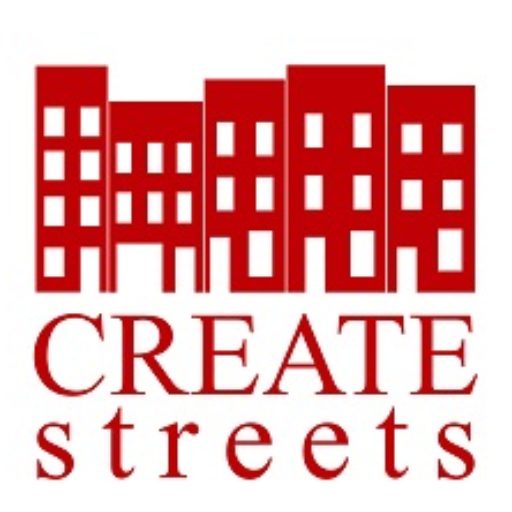Create Streets Associate Director, Eleanor Broad, reports back from 48 hours on the Garonne
Last week, I spent 48 hours in Bordeaux. I met with Mayor Pierre Hurmic and his deputy, Didier Jeanjean — the elected official leading on creating calmer, more people-friendly streets (ville apaisée) and on greening the city (végétalisation) — along with his colleague on the City Council, Maude Fragale. I sat in the glorious offices of the Hotel de Ville and toured some of their projects as they shared their vision for Bordeaux’s transformation over the past four years.
Afterwards, I explored the city myself — on foot, by bike, by tram, and even by car — tracing the tangible impact of their work. Bordeaux is not perfect. But it’s close. And it’s getting better. So much better, in fact, that my husband and I caught ourselves wondering whether we might just move there.
Here are ten things I learnt about the quiet clarity of Bordeaux’s urban transformation — a vision that gently balances heritage and modernity; trams and cars; Bordeaux limestone and abundant greenery (or as they put it in France, le minéral and le végétal); and the traditional high street with all sorts of new forms of community and commercial life.
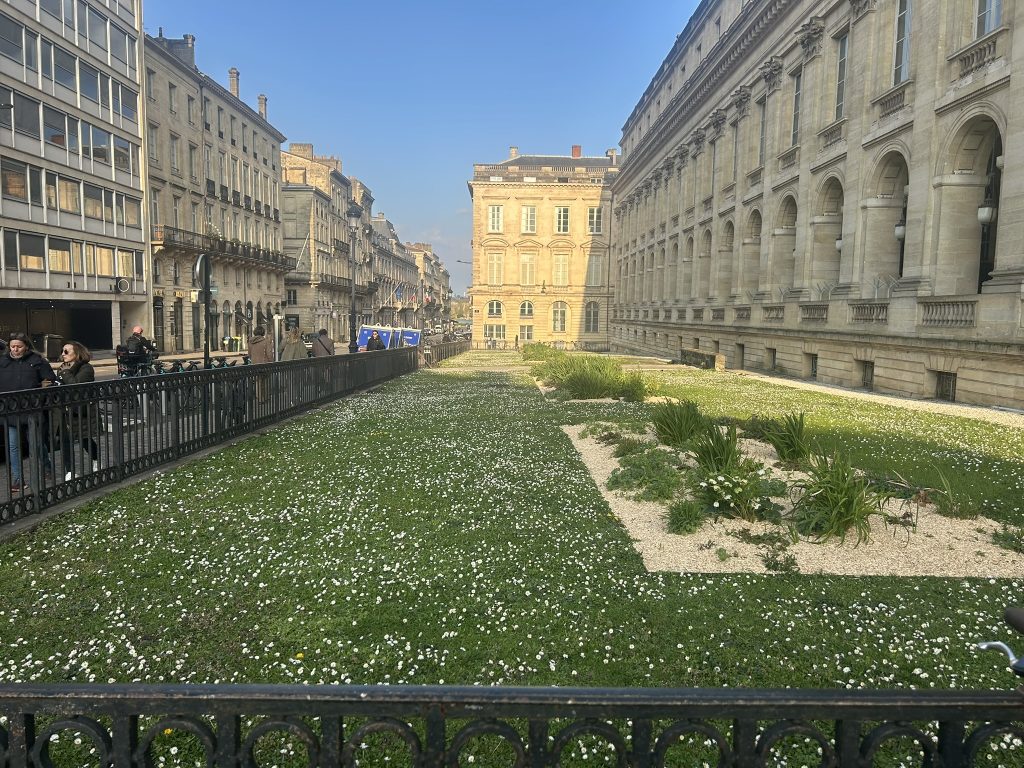
- Unified vision: Nature in the City and Streets under one roof
Bordeaux has organised its administration so that the Public Realm, Highways and Nature all fall under a single department led by Didier Jeanjean (who before he entered politics was a professor of wine and dedicated climate change campaigner). Nature is a core principle of their strategic vision for the city – a “Declaration of the Rights of Trees” was proclaimed before the National Assembly in 2019 and is hanging in pride of place in the Hotel de Ville, signed by Mayor Hurmic. This commitment to bringing nature back into cities as an urgent priority echoes a central recommendation of our landmark Greening Up report. Without this integration and cooperation between roads and nature, initiatives risk solving for flooding alone but, for example, missing opportunities to restore biodiversity. Or they meet air quality targets but overlook ways to increase social cohesion. In Bordeaux this multi-disciplinary approach ensures proper, holistic thinking about the city’s future. We talk about nature for Planet, for People and for Place. It’s the same thing!
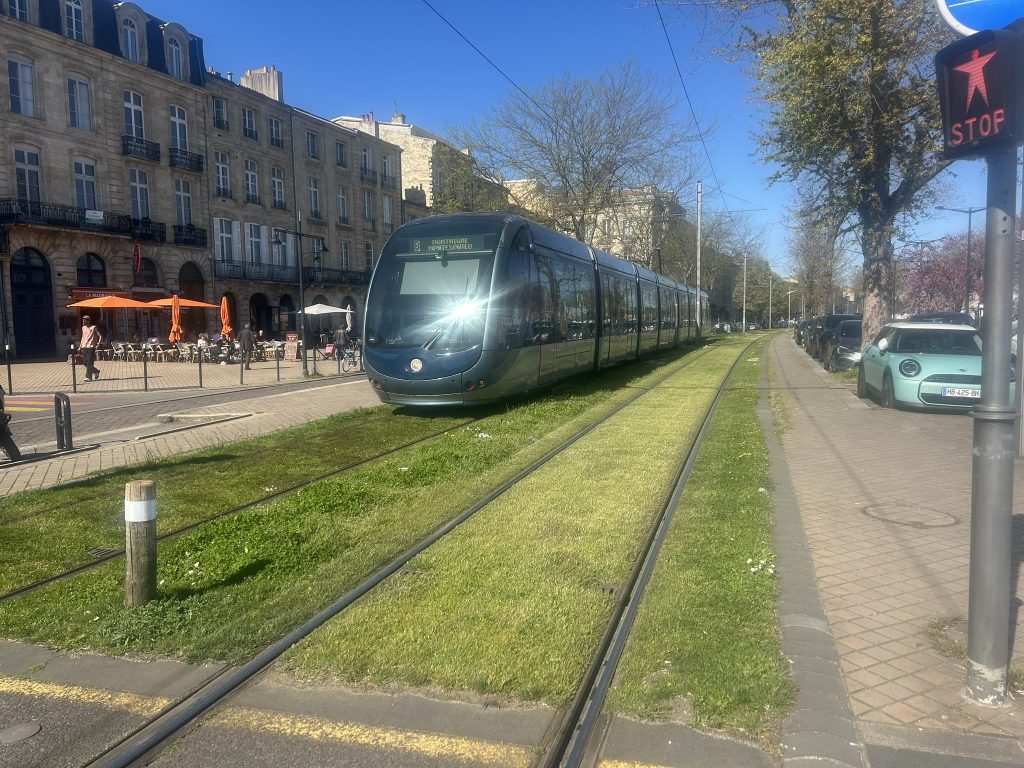
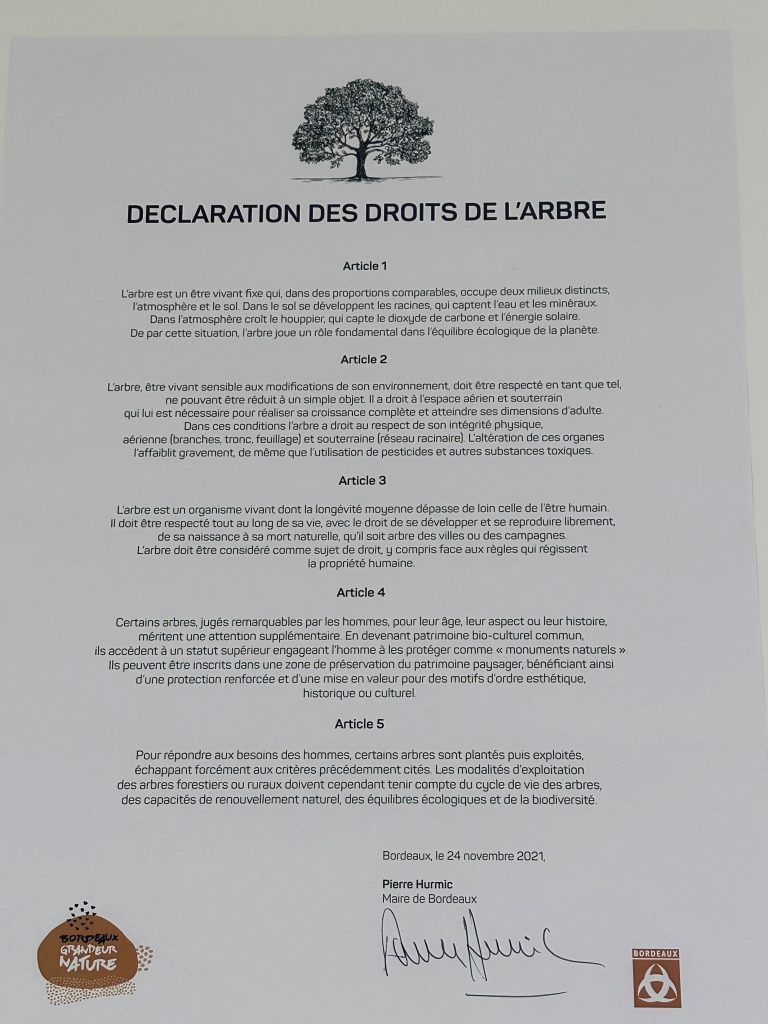
- Where greenery goes, social bonds follow
“Where there is greenery, there is community (or “lien social“) says Didier. We’re in the business of creating places where people naturally find each other and greenery is one the of the best ways to do that. As soon as we bring in seating and greenery then people gather and good things start to happen: they meet for lunch under the trees, they sit and play some music, children run around and composting clubs start up. Also critical is to provide places for older people to sit down and have a rest, making it easier for them to get out of their homes and get out and about”. (and on cue we saw an elderly couple sit down to eat a sandwich on recently installed chairs alongside the busy but now pacified and greened Cours du Marechal Juin). This fundamental insight drives their planning. Green spaces are not just ecological assets but social catalysts. A prime example of this is their Place de Capucins, once a road from one place to another, now a lovely place of its own.
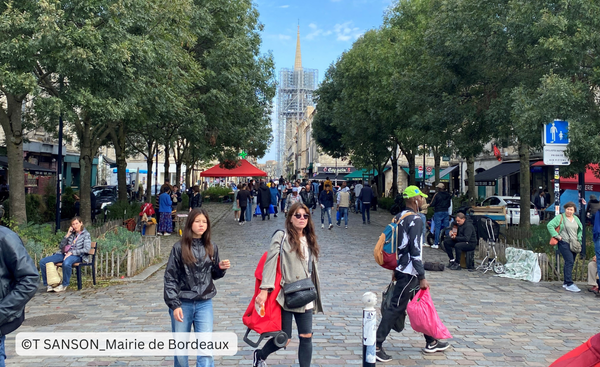
- Quality over quantity: a 200-year perspective
Unlike so many other cities Bordeaux doesn’t set ambitious targets for numbers of trees planted for example. Instead, they have identified sites and streets across the city with specific problems –heat islands, poor air quality, school streets – and are working through them methodically. Their focus remains squarely on quality and longevity. Striking was their approach to utilities. “Yes, if they have to be moved to make way for Nature, we move them,” the deputy Mayor explained when I expressed surprise. “Sometimes the utility firms pay, sometimes we pay. But let’s see in 200 years time which streets are working for the city in the new climate – the ones where we didn’t move the utilities, or the ones where we did!” A perspective measured not in election cycles but in centuries.
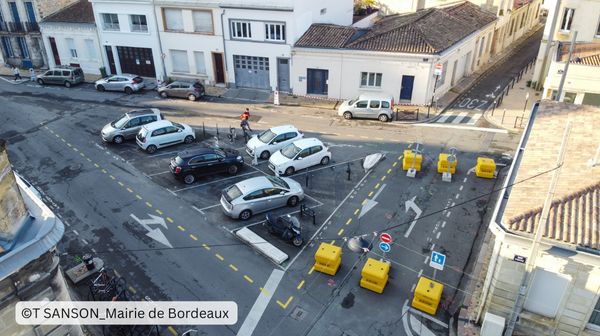
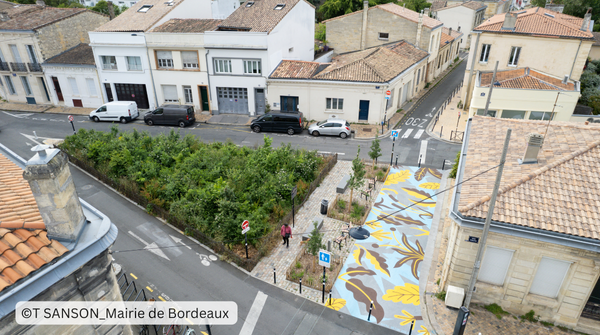
- Transformation first, not prohibition
Strict privacy laws in France mean they cannot use cameras (or ANPR) to enforce traffic restrictions so in some ways you could say that Bordeaux has had to “do it the hard way” – genuinely transforming the physical nature of streets, ceding more space to nature, to bikes and to pedestrians and gently forcing cars to take second place rather than simply prohibiting them through cameras and hefty fines. I wondered if this approach, while more resource-intensive, creates less conflict and more lasting change in the way people use their streets.
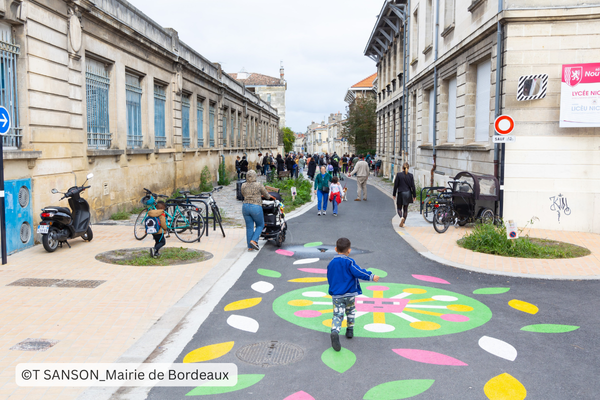
- Cars are guests of the streets (not enemies)
What struck me most was the absence of car to bike or car to pedestrian antagonism. Cars aren’t banned; they’re guests in a shared space but clearly come third after trams, walking and cycling and so have no option but to slow down and go carefully. The result is a surprising harmony of multiple uses – trams, bikes, pedestrians, and yes, cars. By far the most efficient way of getting around for longer distances is by tram. A network of quiet, elegant trams seemingly cover most of central Bordeaux, even if cars (mostly taxis) still have their place in this careful balance. I heard that the Mayor eschewed his mayoral issued car. When I met him he was speeding through the gates of the Hotel de Ville on his bright yellow cargo bike. (Seeing 1 or 2 or even 3 children on the back of their parent’s cargo bike was a completely normal sight in Bordeaux. I think even Decathlon now sells cargo bikes in France (not yet in the UK) making it a far more viable option.)
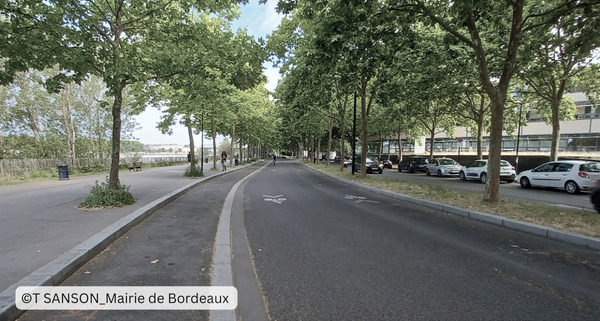
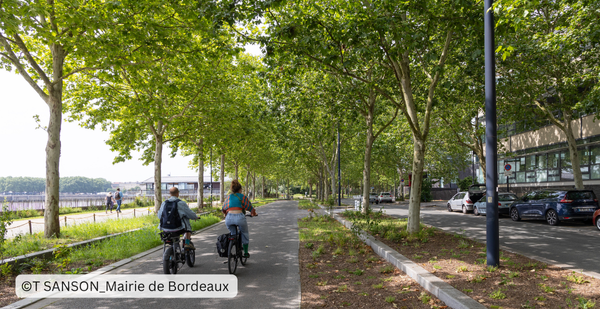
- Working within heritage constraints. Embracing the past and the future.
As a UNESCO World Heritage city, everything Bordeaux does happens in the context of retrofitting and respecting its heritage and reassuring many that they are doing just that. Cobbled and often narrow streets have forced planners to be creative, using every inch of space and creating a new Bordeaux that both respects its stone heritage but also prepares it for the future. The constraints have bred invention rather than limitation.
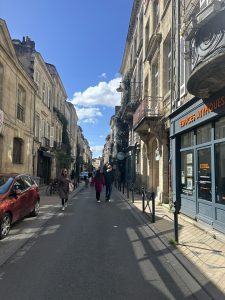
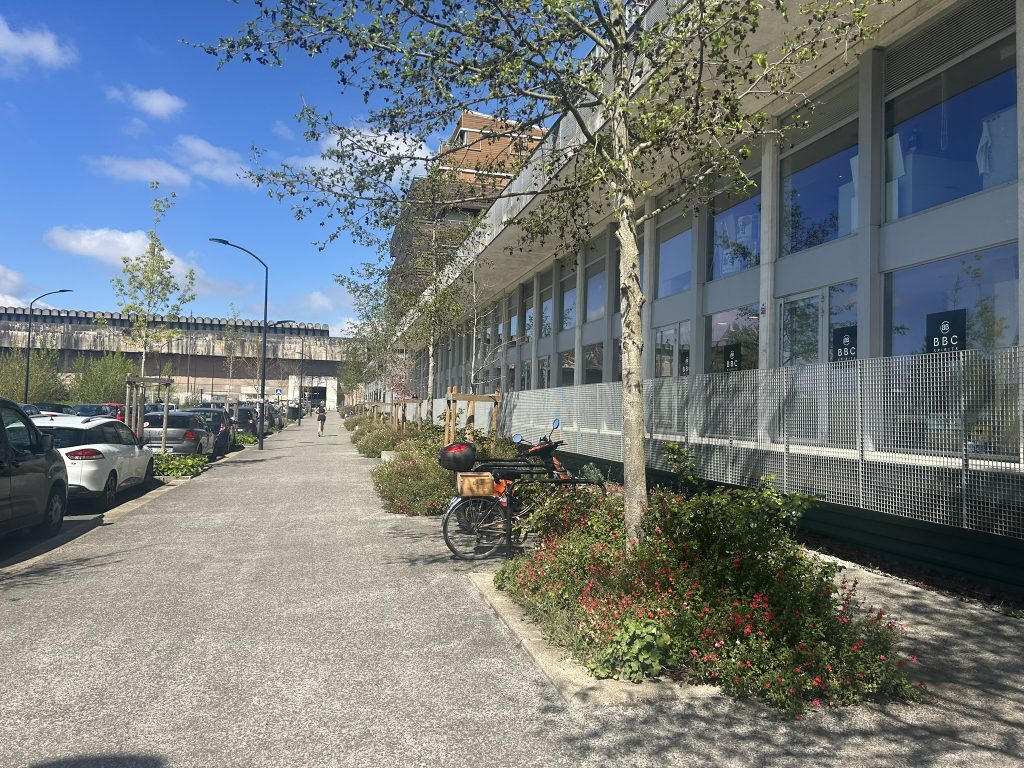
- Giving residents and businesses the right to plant up their streets!
So whilst those streets may not have room for rows of trees down the pavements, Bordeaux is finding ways to integrate Nature back into the historic centre, often going vertically and encouraging everyone to take part and take ownership. In Greening Up we proposed a right to plant. In Bordeaux the “permis de vegetaliser” (or greening permit) gives them just that right. Businesses and residents can apply for a permit to plant up the front of their business or house. The council scans for services, digs the hole, plants the chosen vine (from a choice of 4) and gives tips on maintenance. And if planting in the pavement is not possible then they give out planters, either permanent and mobile. Vines are now growing everywhere. This is Bordeaux after all! And whereas before it was one permit per household there is now no limit to how many you can grow.
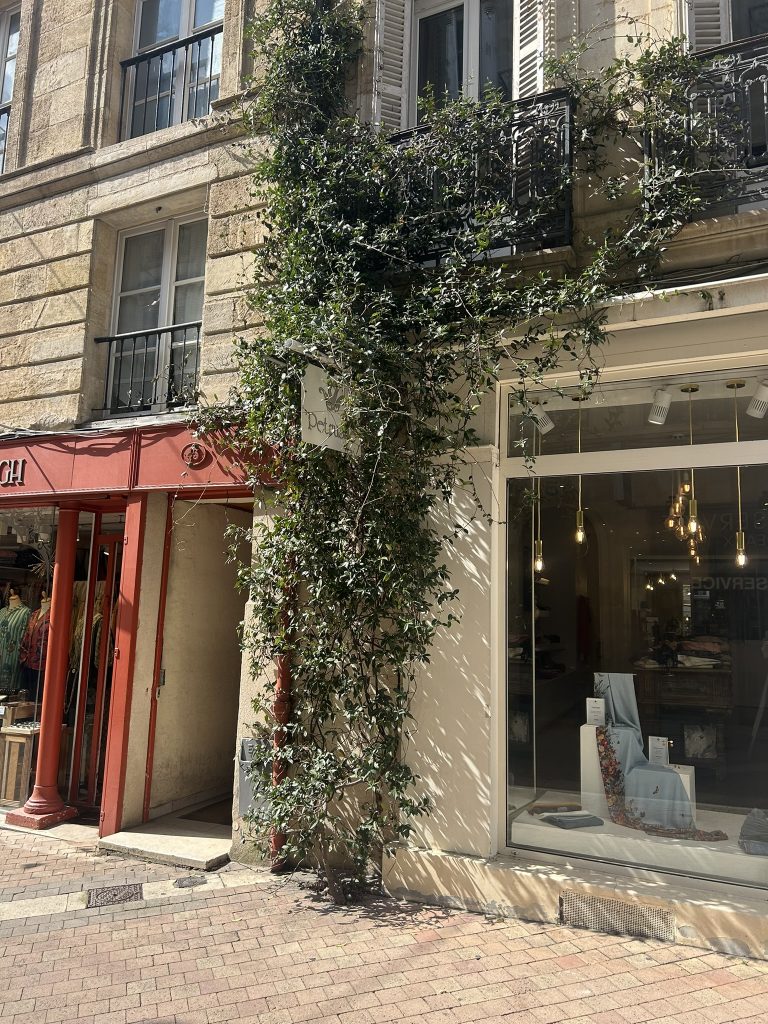
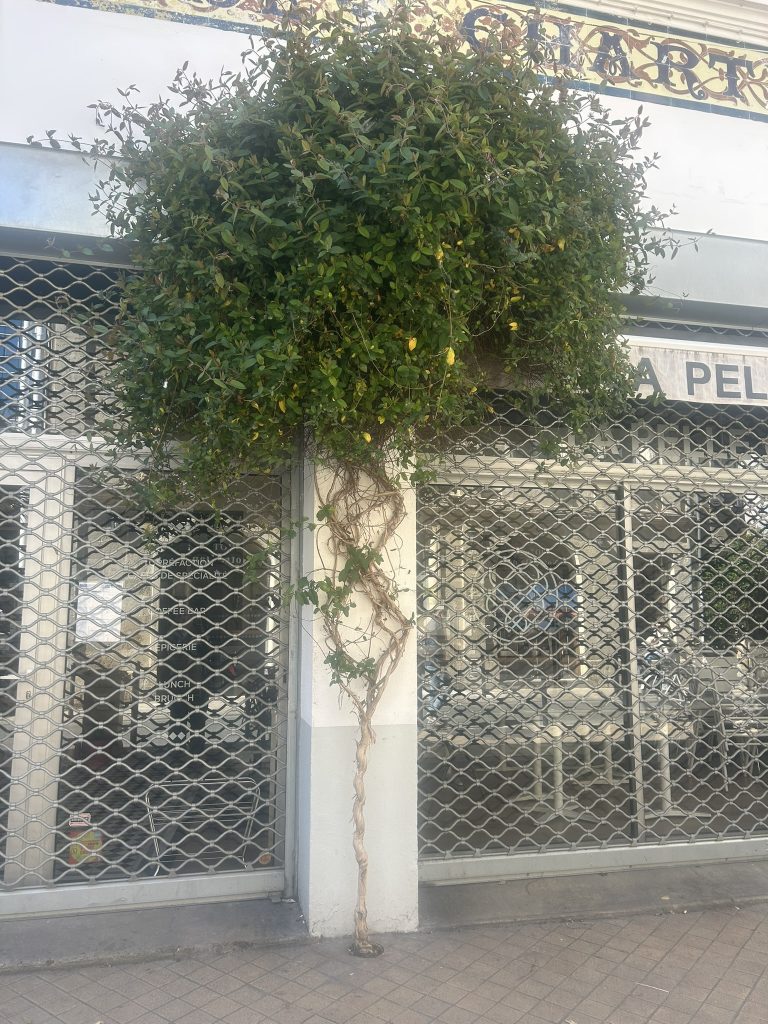
- Standard street furniture brings coherence and economy
Bordeaux uses standardised street furniture and planters throughout the city. A clear design code directs all their landscaping and highways projects, just as Create Streets are writing for councils in the UK. “Whenever we have a triangle in the road we design the landscape like this” This standardisation isn’t just cheaper – it looks better, creating visual coherence across neighbourhoods and reinforcing the city’s identity. And somehow even the odd dash of graffiti doesn’t deter from their elegant planters.
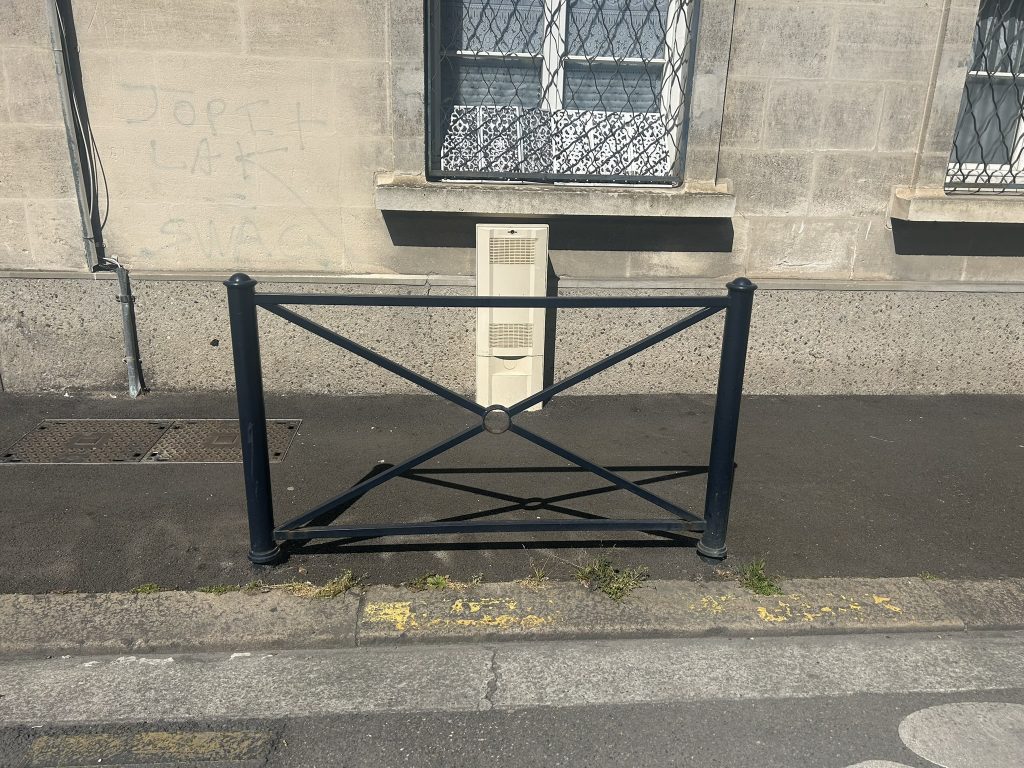
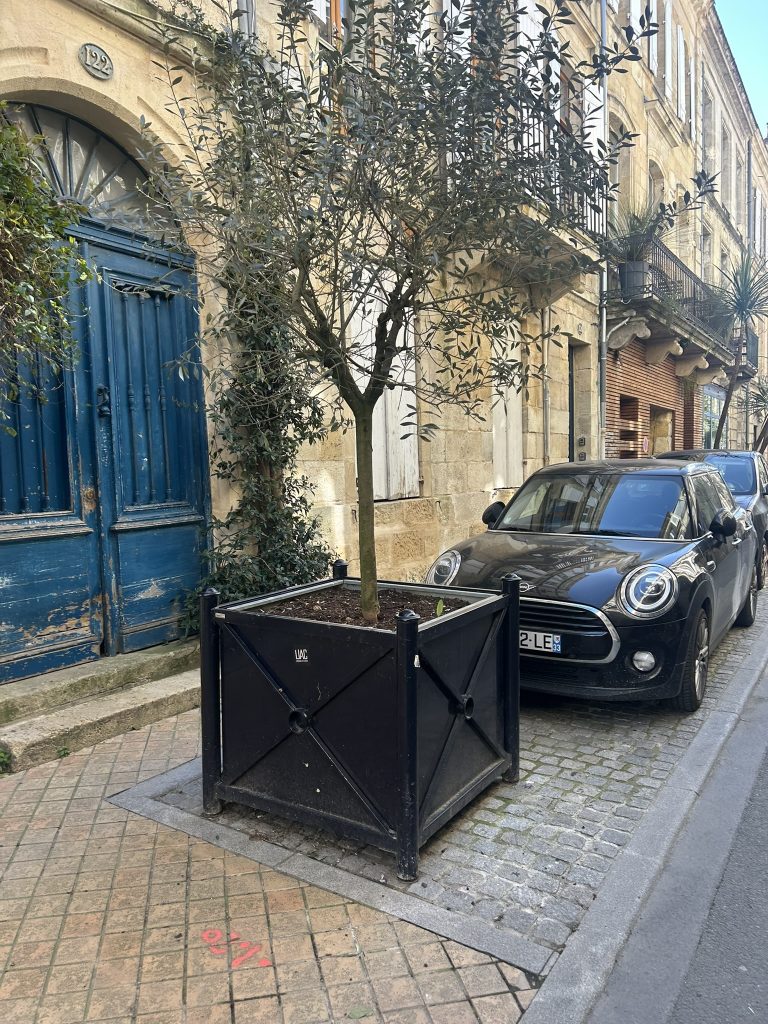
- Reimagining the riverfront
The city hasn’t rested on the laurels of its historic centre. It has also extended the city’s reach. The quayside, dominated by car parking and something of a no-go zone until the 1990s, has been reclaimed. Cars now disappear into underground car parks and the newfound space has been set aside for tram lines, running and cycling paths, swathes of grass, wildflower meadows and trees, picnic benches and a skate park. And on a Friday afternoon in March it was humming with people and I was pulled in to explore. Even the most utilitarian urban spaces can become civic assets.
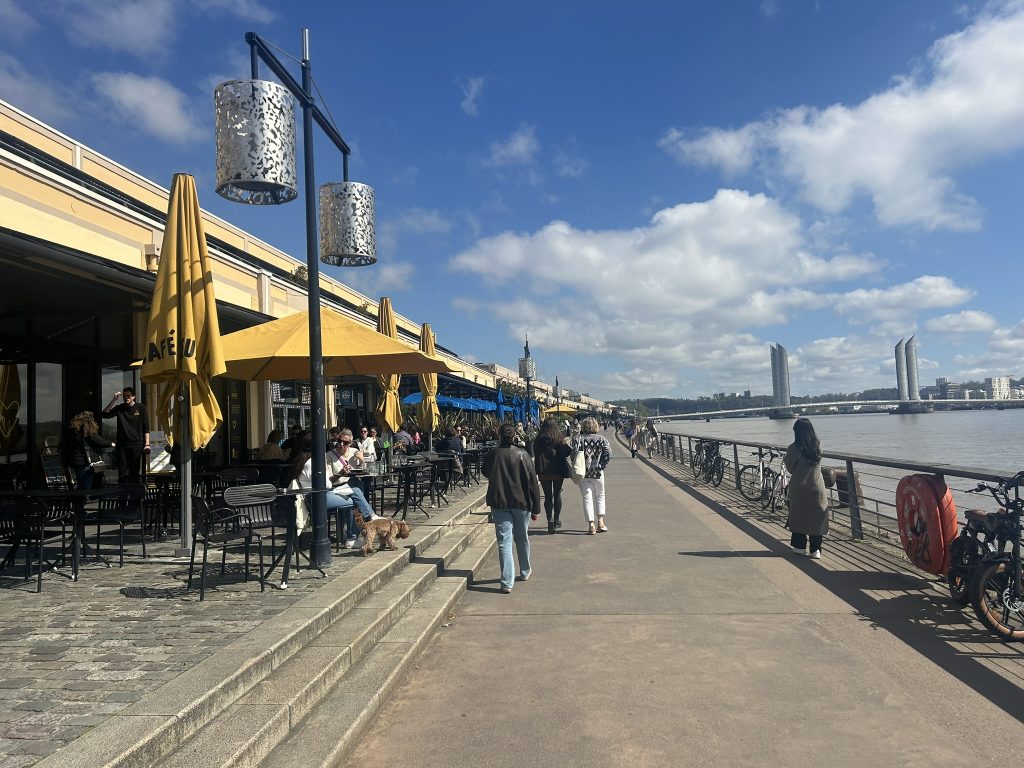
- Mixed use high streets: a regeneration of a different kind.
Further along the riverfront a string of 19th-century hangars—once industrial, now reimagined—host “Bord’Eau”, a collection of (presumably low or turnover rent), co-working spaces, cafes and restaurants, a business school, a science museum and discount outlets of high-end brands (Bo concept, Coq Sportif, Lindt etc.). Early on Saturday morning, alongside those doing outdoor yoga or having their coffee looking out across the Garonne a queue stretched down the riverfront – people waiting at 9am for a pop-up plant sale (with tickets reserved online). Quietly local in spirit, it drew people of all ages to the riverside. Nothing flashy, nothing forced. Just very clever and somehow touching.
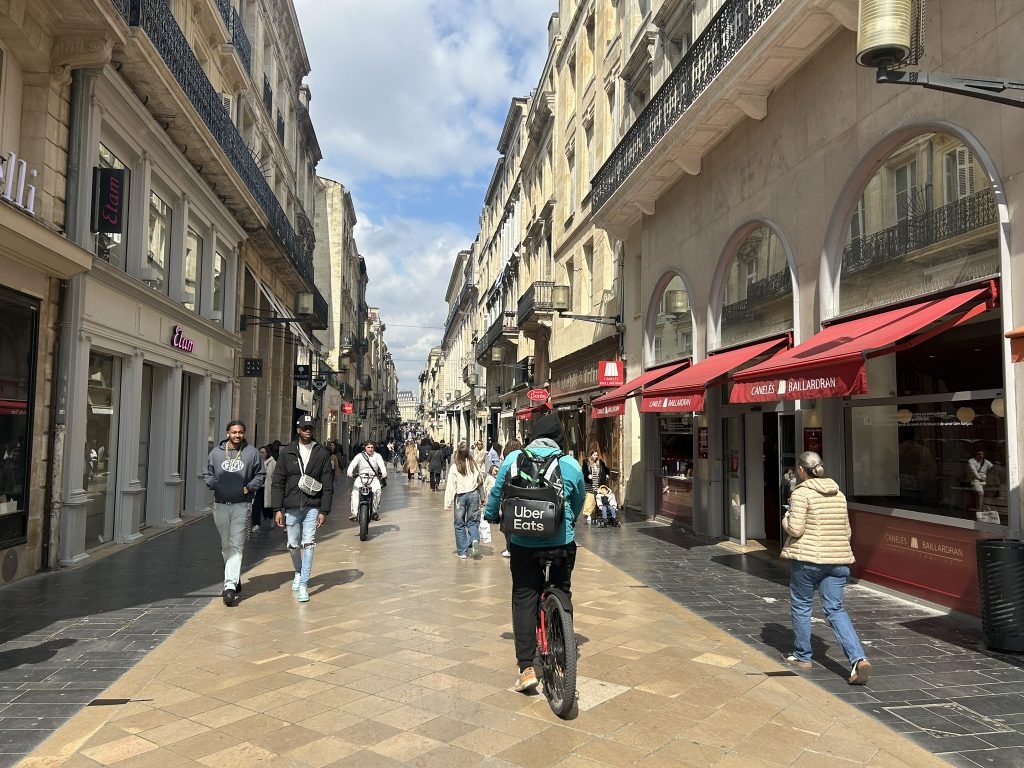
One final thought
What struck me most about Bordeaux was a clear vision of urban life where heritage and nature, human and commercial activity coexist. Bordeaux doesn’t try too hard. It layers heritage and modernity in a way that feels natural, unselfconscious and human. This is a city getting the basics right: walkable streets, mixed uses, historic buildings reused, and places where people naturally want to spend time. And on top of all this Bordeaux felt modern and exciting. No wonder people are moving there in droves. (And I didn’t even have time to visit the Eco Darwin village on the other side of the river – a once squat, now eco village). I spent 48 hours there. I loved every minute. You might too.
Eleanor Broad is Associate Director at Create Streets and lead author of Greening Up.
